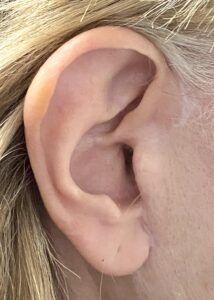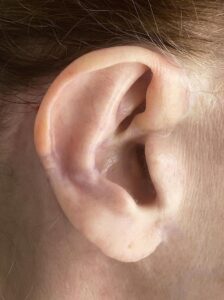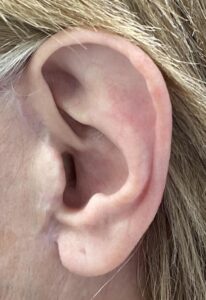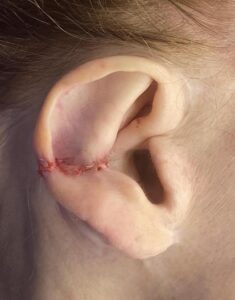Background: The large ear can be vertically reduced of which the most common method is a ‘high and low ‘technique. The bottom of the ear is vertically reduced by a helical rim excision of the earlobe. The top of the ear is reduced by a scaphal flap rotation after excision of the middle part of the outer helical rim. This provides anon effective shortening of the length of the ear with minimal scarring.
In the large ear patient that has a large concha the high and low vertical reduction technique does still vertically shorten the ear but makes the concha appears even larger. This can create an unusual looking ear. Thus the large concha ear is reduced by a ‘middle and low. Technique. The inferior earlobe is still reduced by a helical rim excision. But a central wedge of the ear is removed excising a central ear segment right into the concha. This keeps the ear looking more proportionate with the same ability to reduce is height.
An interesting question is can a second vertical ear reduction be done for even further ear length reduction as well as less conchal show?
Case Study: This 64 year-old female was bothered lifelong by her large ears. They were 75mm on length from the top of the helix to the bottom of the earlobe. She had a very large concha which was disprortionately the largest third of her ear.
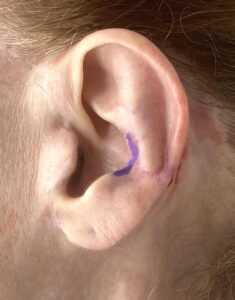
While the ear reduction produced a visible improvement in the length of the ear, one year later she returned desiring further reduction. She also wanted to try and get further conchal size reduction.
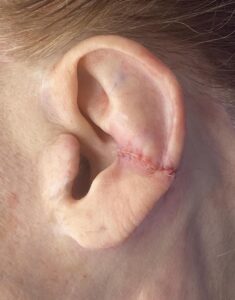
As the ear gets appreciably shorter by central excision it is no surprise that the upper ear starts to bend forward and may even look a bit unnatural. This can be immediately corrected by a few sutures in the upper ear to bend it back into better position.
Case Highlights:
1) An uncommon method of vertical ear reduction is a mid-ear wedge excision into the concha which is indicated when a large concha exists.
2) The middle ear scar from such a vertical ear reduction healed well but begins to pull the upper ear down and outward.
3) For maximal mid-ear vertical ear reduction a secondary stage reduction can be done but has to be combined with an upper ear setback.
Dr. Barry Eppley
World-Renowned Plastic Surgeon



